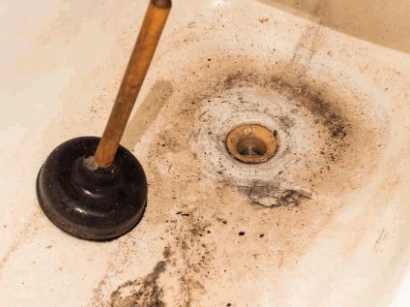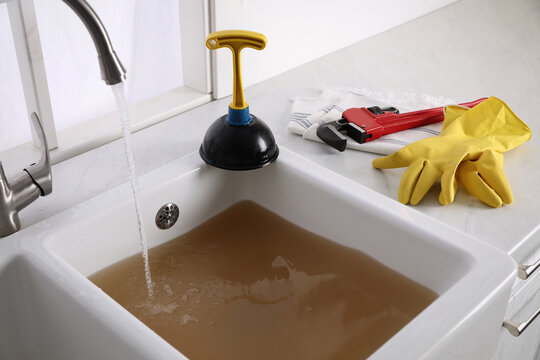Efficient Plunger and Drain Cleaners Application: Key Advice
Efficient Plunger and Drain Cleaners Application: Key Advice
Blog Article
The article author is making a number of good points on the subject of How to Unclog Your Sink with a Plunger as a whole in the content down the page.

Intro
Proper upkeep of household drains is crucial for avoiding obstructions and ensuring smooth water flow. Among the trick tools in every property owner's toolkit is the bettor, along with various drain cleaners made to tackle persistent clogs successfully. This article explores exactly how to make use of plungers and drain cleaners successfully to maintain your drains streaming openly.
Section 1: Comprehending Bettors
Kinds of Plungers
There are numerous sorts of plungers available, each made for various types of drains and clogs. The most typical kinds consist of mug bettors, flange bettors, and accordion plungers.
How Plungers Job
Plungers work with the concept of creating stress and suction to dislodge obstructions. When appropriately applied over a drainpipe, they create a vacuum cleaner that can take out debris or separate blockages.
Selecting the Right Bettor
Selecting the ideal bettor depends upon the kind of drainpipe and the nature of the clog. Cup bettors are perfect for sinks and tubs, while flange plungers are better suited for bathrooms as a result of their layout.
Common Mistakes with Plungers
Preventing these mistakes makes certain effective plunging: incorrect seal around the drain, insufficient pressure, and not clearing bordering debris.
Section 2: Using Plungers Effectively
Preparation
Before diving, ensure the plunger covers the drain totally and creates a limited seal. Clear any visible debris around the drain opening.
Method
Beginning with mild diving movements to develop suction. Increase stress gradually, utilizing a constant rhythm. Repeat as needed until the drain removes.
Fixing Tips
If diving doesn't work, attempt changing the seal, using oil jelly for a much better seal, or utilizing a various sort of bettor.
Area 3: Recognizing Drain Cleansers
Kinds Of Drain Cleaning Company
Drain cleaners can be chemical or enzymatic. Chemical cleansers utilize strong chemicals to liquify obstructions, while chemical cleaners utilize natural enzymes to break down raw material.
How Drain Cleansers Work
Chemical cleansers respond with blockages to liquify them, while enzymatic cleaners break down natural materials like hair and oil without harming pipelines.
Safety and security Considerations
Constantly wear handwear covers and eye defense when using chemical drain cleaners. Make sure ample air flow and follow producer instructions very carefully.
Eco-Friendly Alternatives
Take into consideration using vinegar and baking soda or enzyme-based cleaners for green options that are much safer for pipelines and the setting.
Area 4: Utilizing Drainpipe Cleaners Successfully
Application Techniques
Pour chemical cleaners straight right into the drainpipe opening. Enable them to benefit the recommended time before purging with warm water. Enzymatic cleansers must rest overnight.
Preventative measures
Avoid mixing various sorts of cleaners, as this can create poisonous fumes. Never ever use chemical cleaners along with a bettor, as spilling can happen.
Taking Care Of Persistent Blockages
For consistent blockages, think about utilizing a pipes serpent or calling an expert plumbing technician to avoid damage to pipes.
Final thought
In conclusion, understanding just how to utilize bettors and drain cleaners properly is essential for maintaining healthy plumbing systems. By selecting the right tools and methods, homeowners can tackle minor clogs and avoid major plumbing problems down the line.
How To Properly Use A Plumbing Snake To Clear Drains
When any drain clogs in our home arise, we tend to gravitate toward the plunger and little else. In cases where the plunger and its vacuum-created pressure are not able to clear clogs, many immediately move to harmful chemicals or simply call their plumber to fix the issue.
we’re happy to help with all drain cleaning needs and concerns. This includes informing you on a few other home remedies you may have at your disposal for minor to moderate clogs, one of which is the use of a plumbing snake. Many people have never used one of these before – let’s go over the steps to take when your drain clogs and you have a plumbing snake available.
Attempt Plunger Use
The first step here, as we noted above, should indeed be to grab your plunger when you notice a drain clog and attempt to resolve it this way. If you’re unsure how to use a particular type of plunger, our plumbers can answer any questions you have. If this doesn’t do the trick, however, you move on to the snake.
Locate And Prepare Snake
A plumbing snake is a metal or plastic device that’s generally about a quarter of an inch thick. It’s design with significant extensions, meant to reach down into your clogged drain and push the clog out. Snakes also contain drain augers that will latch onto and push stubborn blockages.
If your plunger doesn’t clear a clog, locate your snake and bring it to the drain in question. We also recommend keeping a bucket nearby to collect the clog once you pull it out, plus we’d advise wearing goggles and possibly protective gloves.
Feed Snake
Once you’re ready to go, feed the snake slowly down the drain, using the crank device it comes with to keep it moving until it finds the clog. Once this happens, much of the clog will be latched onto the coil so you can pull it out, while the rest will simply break up and flow downward.
Detach Debris
Remove the snake slowly from the drain, and once you’ve done so, pick off any debris that’s stuck to the coil. This is another area where wearing gloves is a must.
Flush Drain
Finally, take a few minutes to ensure the snake has done its job correctly. If you’ve been using it on a toilet, flush the toilet a couple times and make sure everything flows well. If you’ve used it on a different drain, flush it with some room temperature water.
https://www.mybuddytheplumber.com/blog/how-to-properly-use-a-plumbing-snake-to-clear-drains/

Application Techniques
Pour chemical cleaners straight right into the drainpipe opening. Enable them to benefit the recommended time before purging with warm water. Enzymatic cleansers must rest overnight.
Preventative measures
Avoid mixing various sorts of cleaners, as this can create poisonous fumes. Never ever use chemical cleaners along with a bettor, as spilling can happen.
Taking Care Of Persistent Blockages
For consistent blockages, think about utilizing a pipes serpent or calling an expert plumbing technician to avoid damage to pipes.
Final thought
In conclusion, understanding just how to utilize bettors and drain cleaners properly is essential for maintaining healthy plumbing systems. By selecting the right tools and methods, homeowners can tackle minor clogs and avoid major plumbing problems down the line.
How To Properly Use A Plumbing Snake To Clear Drains
When any drain clogs in our home arise, we tend to gravitate toward the plunger and little else. In cases where the plunger and its vacuum-created pressure are not able to clear clogs, many immediately move to harmful chemicals or simply call their plumber to fix the issue.
we’re happy to help with all drain cleaning needs and concerns. This includes informing you on a few other home remedies you may have at your disposal for minor to moderate clogs, one of which is the use of a plumbing snake. Many people have never used one of these before – let’s go over the steps to take when your drain clogs and you have a plumbing snake available.
Attempt Plunger Use
The first step here, as we noted above, should indeed be to grab your plunger when you notice a drain clog and attempt to resolve it this way. If you’re unsure how to use a particular type of plunger, our plumbers can answer any questions you have. If this doesn’t do the trick, however, you move on to the snake.
Locate And Prepare Snake
A plumbing snake is a metal or plastic device that’s generally about a quarter of an inch thick. It’s design with significant extensions, meant to reach down into your clogged drain and push the clog out. Snakes also contain drain augers that will latch onto and push stubborn blockages.
If your plunger doesn’t clear a clog, locate your snake and bring it to the drain in question. We also recommend keeping a bucket nearby to collect the clog once you pull it out, plus we’d advise wearing goggles and possibly protective gloves.
Feed Snake
Once you’re ready to go, feed the snake slowly down the drain, using the crank device it comes with to keep it moving until it finds the clog. Once this happens, much of the clog will be latched onto the coil so you can pull it out, while the rest will simply break up and flow downward.
Detach Debris
Remove the snake slowly from the drain, and once you’ve done so, pick off any debris that’s stuck to the coil. This is another area where wearing gloves is a must.
Flush Drain
Finally, take a few minutes to ensure the snake has done its job correctly. If you’ve been using it on a toilet, flush the toilet a couple times and make sure everything flows well. If you’ve used it on a different drain, flush it with some room temperature water.
https://www.mybuddytheplumber.com/blog/how-to-properly-use-a-plumbing-snake-to-clear-drains/

We are very fascinated with Here's How to Correctly Use a Toilet Plunger and I am hoping you appreciated my blog post. Loved our posting? Please share it. Help somebody else discover it. Thank you for your time. Don't hesitate to visit our blog back soon.
About Report this page